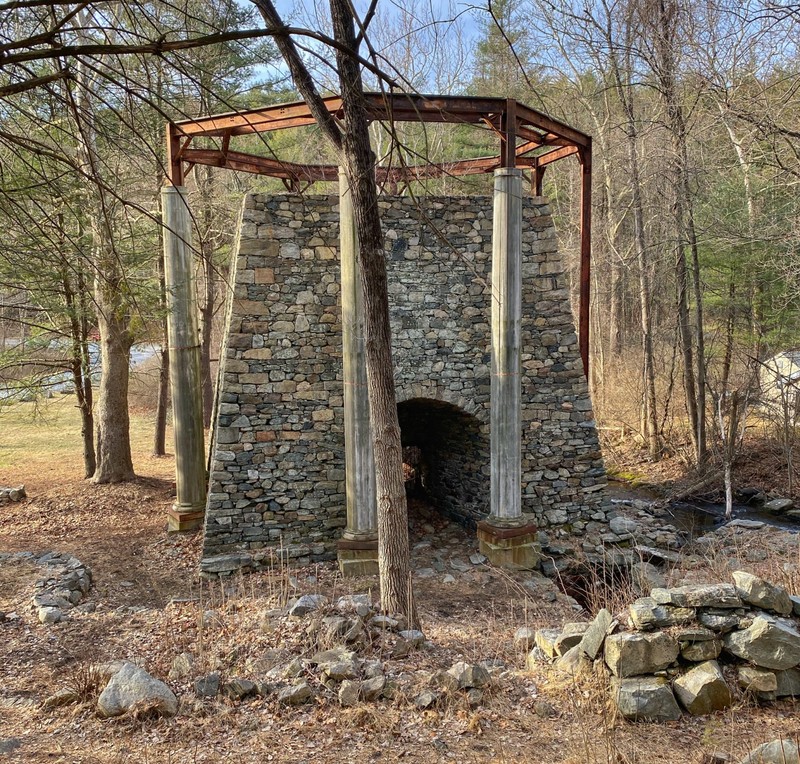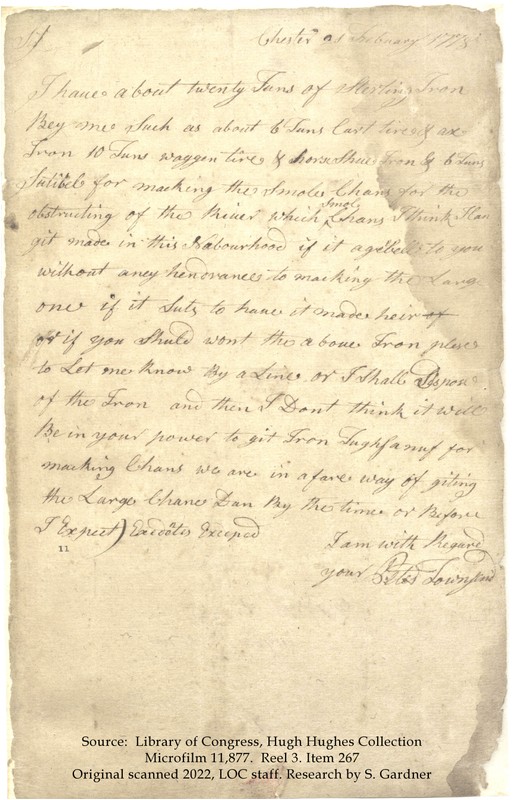Sterling Iron Works [Revolutionary War]
Introduction
Text-to-speech Audio
The Sterling Iron Works were begun by Ward & Colton around 1751. The iron these mines produced was noted to be especially strong due to the high quality of the magnetite deposits. Peter Townsend and Abel Noble were the owners prior to the Revolutionary War. In February of 1778 when a chain was needed to block the Hudson River against British ships, they were awarded the contract for the Great Chain to be placed at West Point, and produced the huge links within a few months, helping secure the river for the duration of the war. The Sterling Works area straddled the borders of what later became the Town of Warwick and the Town of Tuxedo. The "secret" forge area of 1778 was discovered within the last decade by Donald Bayne and lies within the Town of Warwick.
Images
One of the early iron furnaces at Sterling Forest State Park

Letter about iron on hand at Sterling, for the chain, Feb. 1778

Backstory and Context
Text-to-speech Audio
The Hudson River was a key corridor for both the British and the Americans. Controlling this essential waterway could crush or save the rebellion. Two previous attempts had been made to obstruct the river and prevent British ships from passing, but these failed. In January of 1778 a third obstruction was planned, this time to be made of the strongest iron available, from the Sterling mines. The recent burning of Kingston by the British caused a crisis; this time the barrier had to succeed, or the Revolution could be lost. Four men were appointed to choose a new site: John Sloss Hobart, Henry Wisner, John Hathorn, and Zephaniah Platt. They gave their report to the New York Provincial Convention on January 14, 1778 that the placement should be West Point, and the contract was awarded to Townsend and Noble on February 2. The team of around sixty skilled forgemen and laborers worked furiously day and night. They produced a chain of about 600 yards, each link 2 feet long weighing 114 pounds each, within a few months. The secret project was guarded by Continental Army soldiers and men of John Hathorn's 4th Orange County Regiment of militia. The finished links were moved in small sections through the snow by ox carts and sledges to Brewster's forge near to the Hudson, where the sections were connected. The massive Great Chain was stretched across the river on April 30th, and used throughout the rest of the war as a successful barrier to British ships.
Sources
1. Coxe, Macgrane. The Sterling Furnace and the West Point Chain. NY: The author, 1906. Accessed at: https://en.wikipedia.org/wiki/Sterling_Iron_Works. 2. Diamont, Lincoln. Chaining the Hudson: The Fight for the River in the American Revolution. Citadel Press, 1994. 3. Gardner, Sue. Pure Necessity: Revolution at Warwick. Warwick, NY: Wickham Thicket, 2019.
Courtesy S. Gardner
Discovered by S. Gardner in the Hugh Hughes Papers, Library of Congress
